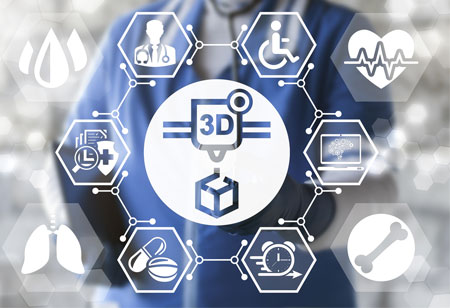THANK YOU FOR SUBSCRIBING
3D Printing: Changing the Face of Healthcare
From its breakthrough in 1983 till today, 3D printing has revamped the healthcare industry.

By
Apac CIOOutlook | Thursday, January 01, 1970
Stay ahead of the industry with exclusive feature stories on the top companies, expert insights and the latest news delivered straight to your inbox. Subscribe today.
From its breakthrough in 1983 till today, 3D printing has revamped the healthcare industry. While the ultimate goal of printing whole complex organs for transplants may still be decades away, 3D printing is creating significant changes in the way surgeries are carried out, disrupting the prosthesis and implant market, pharmacology, and dentistry as well as providing them with new opportunities. For instance, 3D printing is being used to create personalized prosthetics for amputees. By digitally capturing an individual’s unique measurements, custom-fit suits are created. This same technology is also being harnessed to create beautiful conformal ventilated scoliosis braces and more. The ingenious technology is also applied in bio-printing and tissue engineering to create “organoids,” with stem cells as the production material. These organoids, in the future, can be used to grow organs inside the body of a sick patient and take over when an organic organ, such as a kidney or liver, fails.
Check out: Top Dental Tech Companies
For centuries, burn victims have had limited options for healing their skin, but now, researchers in Spain have created a 3D bio-printer prototype that can produce human skin, providing a life-changing cure for burn victims. 3D printing with its epitome of precision also has the potential to upend the pharmaceutical world. Numerous people take dozens of pills each day or week for various ailments, and these multiple medications and their diverse drug interactions and requirements can be exhausting. The mechanism of 3D printing has been used to create a 3D-printed pill, which unlike traditionally manufactured capsules, has the ability to house multiple drugs at once, each with different release times. Also known as the “polypill” concept, it has already been tested on patients with diabetes and has shown great promise.
With precision, speed, and a major slash in cost, 3D printing is revolutionizing the medical world with its immense potential.





